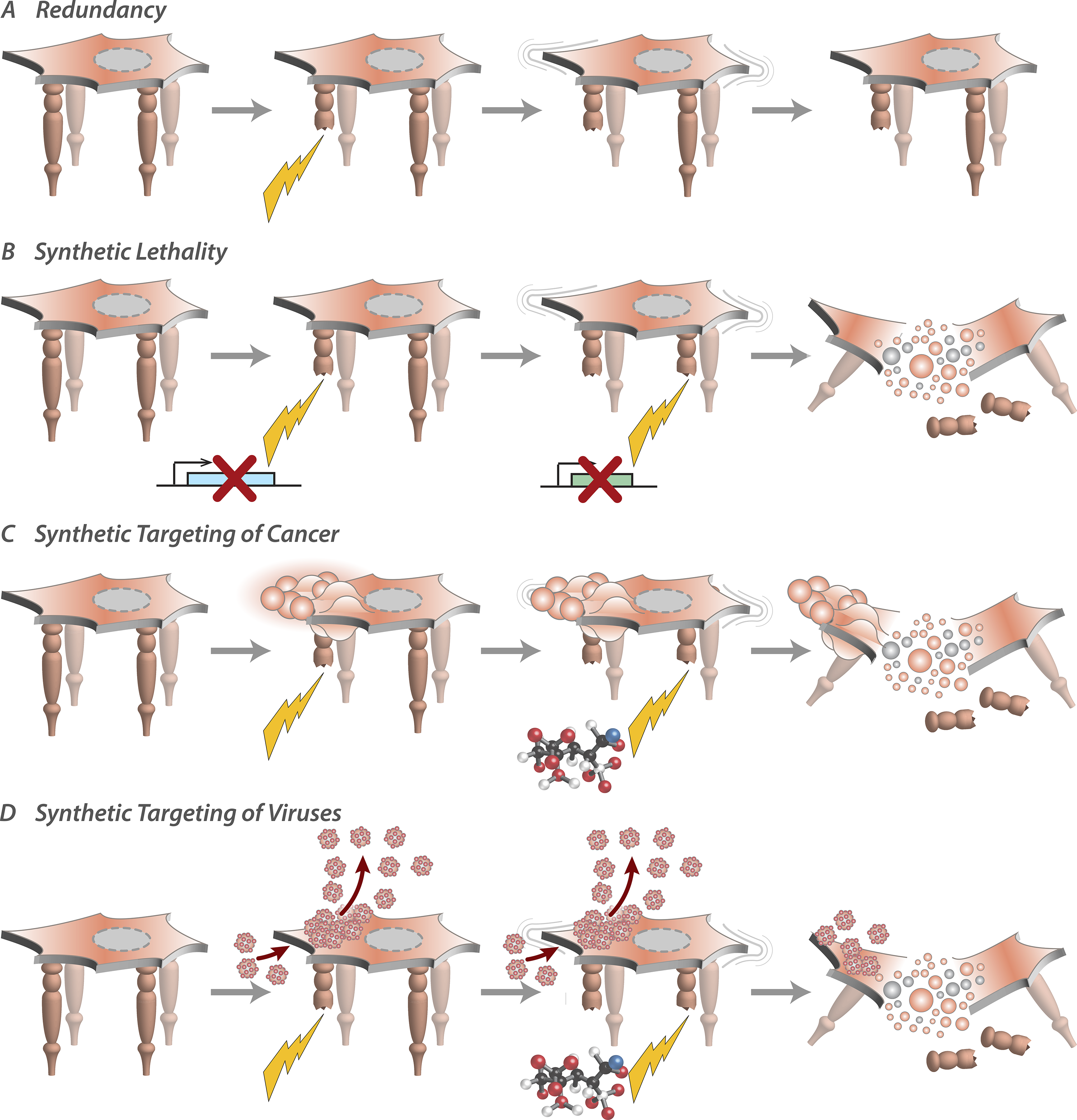In a new Perspective published in the Journal of Cell Biology, scientists from the NCDIR propose several new strategies for developing antiviral therapeutics to target SARS-CoV-2 and other viruses. Drawing inspiration from a well-established molecular phenomenon whereby certain combinations of genetic alleles produce strong negative effects on cell viability, termed synthetic lethality, they propose several strategies for developing therapeutics that are specifically designed to induce synthetic lethality in virus-infected cells.
Analogous to how the legs of a table function to keep the table sturdy and capable of reliably holding objects on its surface, cells also have redundant systems that help maintain cell health. When viruses infect cells, they exploit this redundancy by hijacking host machinery to produce new virions. But like the precarious state of a wobbly table missing one leg, viruses weaken and remove redundancy in cells and induce specific vulnerabilities that could be exploited by therapeutic intervention. Such an approach has several advantages over traditional antiviral strategies as it would ensure specificity for viral-infected cells while simultaneously minimizing off-target effects and the emergence of drug resistance. Similar approaches have had success in the development of therapeutics for certain types of cancer, but until now, the concept has not been extended to infectious disease. You can read more about this exciting development here.

Figure 1. We use the analogy of a table being supported by four legs to illustrate the concept of synthetic lethality and its application to druggable targets. (A) Like the legs of a table, cells have redundant features that make them robust to perturbation. (B) When two legs of a table are removed, the table no longer can remain stable and collapses after removal of the second leg. Similarly, synthetic lethality in a cell occurs when two essential components of a redundant system are removed, causing cell death. (C) The principle of synthetic lethality has been used to develop drugs that target a redundant system of the cancer-causing genetic mutations. (D) Synthetic targeting of viruses is a variant of synthetic lethality, where drugs are designed to target systems redundant with host proteins co-opted to produce new virions and thus, cripple the host cell virus factory.
